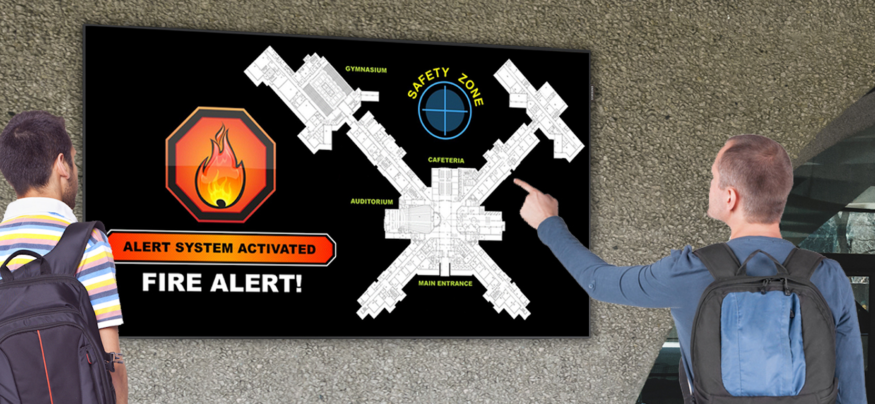When emergencies happen, colleges and universities have a responsibility to inform their populations quickly and efficiently. This is often a difficult task, as communications must reach all students, faculty and staff, regardless of their locations around campus. As a solution, many educational institutions are turning to digital signage to improve communication of campus issues and emergencies in a quick and efficient manner.
When time is of the essence, having the right emergency communication system is critical. Here’s how to select the ideal system for your institution and how to use it to its fullest:
The Right System Should Be Convenient
Many digital signage systems use proprietary cloud-based software that can be challenging to learn. Educational institutions should look for systems that use technology that their staffs are comfortable using in their everyday jobs. This makes it easy for administrators to deploy content on the displays, and it reduces the amount of time spent by IT staff on training employees to use the signage system.
Some digital signage systems also support applications that have become ubiquitous in educational settings. This allows administrators to create content easily and to share it with the campus community quickly. Hypersign — which collaborates with Samsung and Google to offer the signage solution theconnectEDU — offers a digital signage system that accepts native PowerPoint files, for example. This means any staff member can create a slideshow in a familiar format and upload it without help from IT staff.
Prepare Emergency Messages Ahead of Time
Getting a message out in an emergency situation is something that needs to be timely, and it should be produced without errors — technical or otherwise. Crisis situations don’t always lead to the best decisions, and not being prepared can increase the chances of a mistake. Minimize the number of decisions that need to be made during an emergency by creating message templates that can be used for a wide variety of emergencies.
Rehearsing scenarios will help to organize your method for broadcasting messages across the institution. Keeping the messages generic is also important, as it allows staff to quickly fill in pertinent details when they’re in a rush to get the information out. Additionally, it is crucial for leaders at colleges and universities to have access to these materials when they’re away from campus so they can upload urgent messages remotely.
Digital signage is only effective if people know to look for it. Today’s network-connected digital signage solutions provide many uses beyond emergency reporting, including the ability to show marketing messages, instructional information, event announcements and even maps for wayfinding. Continuous, multifaceted use of digital signage will ensure that students and staff read the signs to stay updated on important institutional communications.
A Connected Campus Is a Protected Campus
TheconnectEDU incorporates a Google Chromebox to connect the displays, Hypersign’s cloud-based software to create and share messages, and commercial-grade smart signage displays. By bringing together easy-to-use, industry-leading tools, this system is an affordable and powerful solution that makes digital signage for education an integral part of an overall emergency communication plan.
Broadcasting emergency messages on digital signage is only one aspect of a comprehensive emergency alert system. Hypersign’s motto is “everyone gets the message,” and the company aims to deliver emergency notifications to all screens connected to a theconnectEDU system, including laptops and tablets. Using a text message or email alert system will ensure students, faculty and staff receive emergency messages on their personal devices. Integrating strobe lights and alarms, when necessary, will ensure that students with hearing or vision impairments receive alerts, as well.
Business continuity planning is critical to higher education institutions. Taking the time to establish an emergency communication system that incorporates digital signage and other tools will prepare your organization for sharing important messages in the event of a crisis situation on or near campus.







